FFA open house showcases agriculture and the advantage of hands-on learning
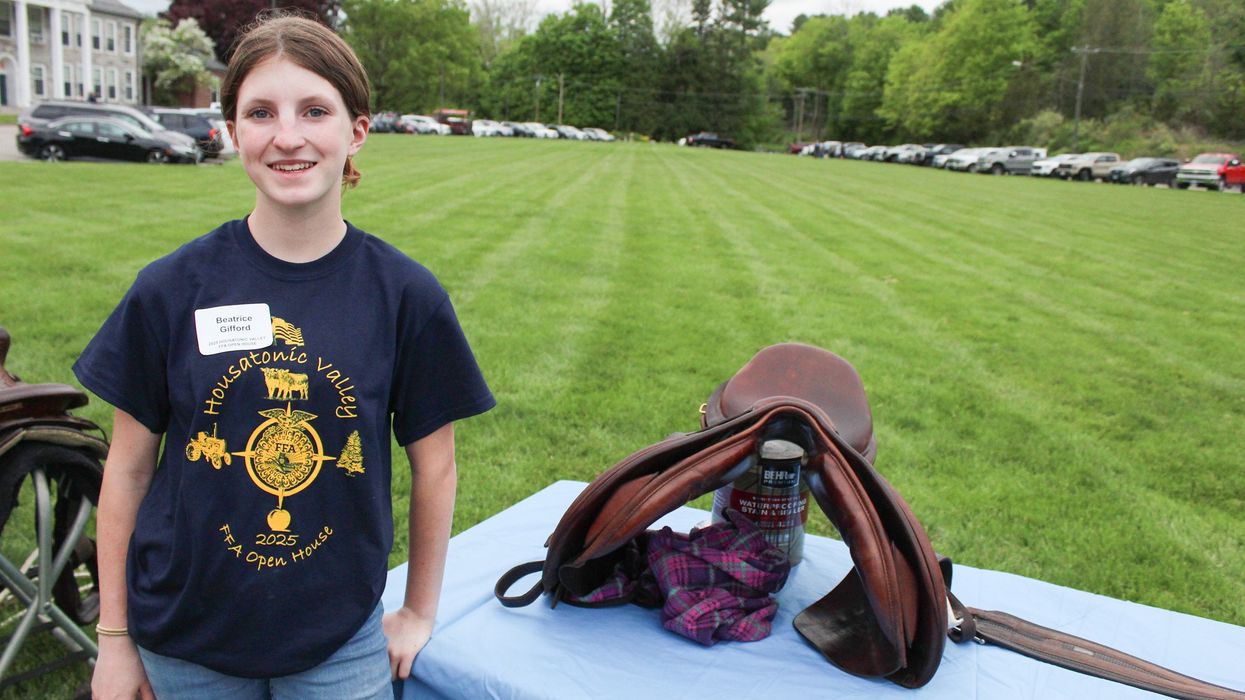
Beatrice Gifford set up a display on the HVRHS lawn to present equipment used in horse racing at the FFA open house May 14.
Patrick L. Sullivan

Beatrice Gifford set up a display on the HVRHS lawn to present equipment used in horse racing at the FFA open house May 14.
FALLS VILLAGE — The Housatonic FFA open house was Wednesday, May 14, and the Housatonic Valley Regional High School grounds were alive with students giving demonstrations, judges solemnly taking notes, and the general public wandering around wide-eyed.
Out on the oval lawn there were assorted horses, including Dixie, a four-year-old registered Palomino quarter horse mare belonging to lifetime FFA member Gloria Tatsapaugh.
Beatrice Gifford, a 9th grader from Kent, was interested in the retraining of racehorses once they have left competition.
She said that fully half of such animals — and there are thousands of them — retire at age five or younger.
Retraining them involves a different diet, different equipment such as saddles and horseshoes, and a different mentality for both horse and human.
She said she is currently retraining a racehorse. “I’m a bit of a horse nerd.”
Daniel Moran, a sophomore from Norfolk, showed interested parties the 14-foot Starcraft boat he and his brother are refurbishing. It’s a work in progress and currently doesn’t have seats.
He said it’s his grandfather’s boat, bought new in 1974.
So far the floor has been taken up, leaks have been patched, new seats obtained, and a new(er) engine mounted.
“We want to keep it as long as we can,” he said.
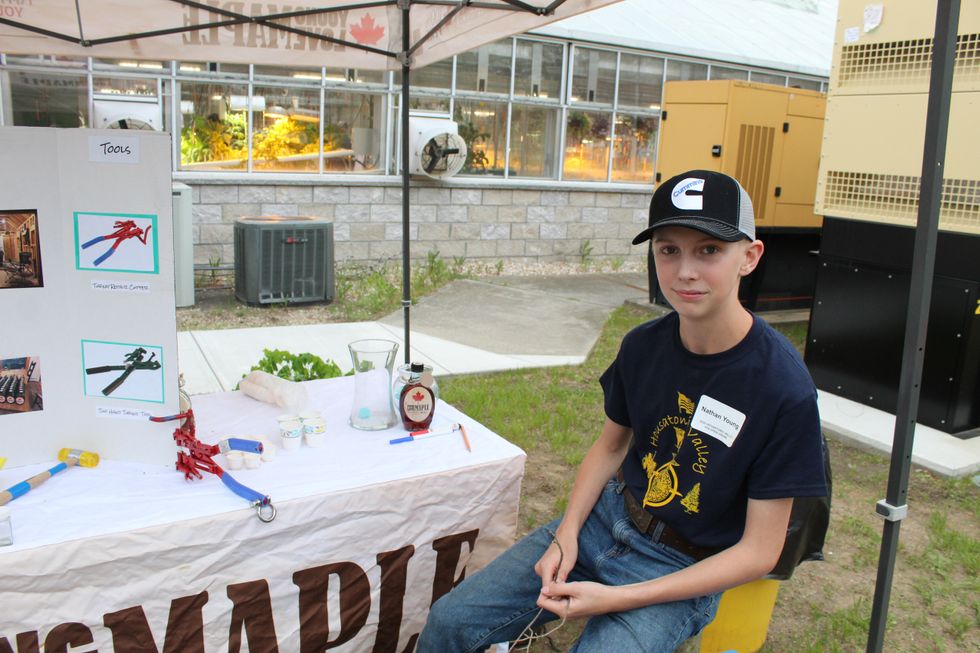
Nathan Young, a freshman from Cornwall, is involved in the family maple syrup business. He had samples of this year’s product, which was on the darker, richer side of the maple syrup spectrum.
He said the family made 35 gallons of syrup this year, which is right in the middle of the business’ historic range of between 20 and 50 gallons per year.
“It was a late season,” he explained. “The taps only went out in January.”
Sasha McCue, a senior from North Canaan, was highly informative about Jack Russell terriers. She has one, formally named “Princess” but nicknamed “Fifi.”
She said the dogs are known for hunting foxes.
They are bold and active, and willing, even eager to go underground into a nest or burrow.
They are also known for hunting snakes, but she doubted Princess — or Fifi — would be enthusiastic.
“If she sees a snake she’ll run.”
Taylor Green, a junior from Kent, has a sister, and her sister had a problem.
She explained to judge Denny Jacobs that conventional soaps made her sister’s skin break out in hives.
The family had a female goat handy, and the goat had lost a baby prematurely and thus had extra milk.
So Taylor did some research and came up with a recipe for a soap based on goat milk. It also has beef tallow, olive oil, lye and coconut oil.
Mixing it up, especially the lye, required protective gear.
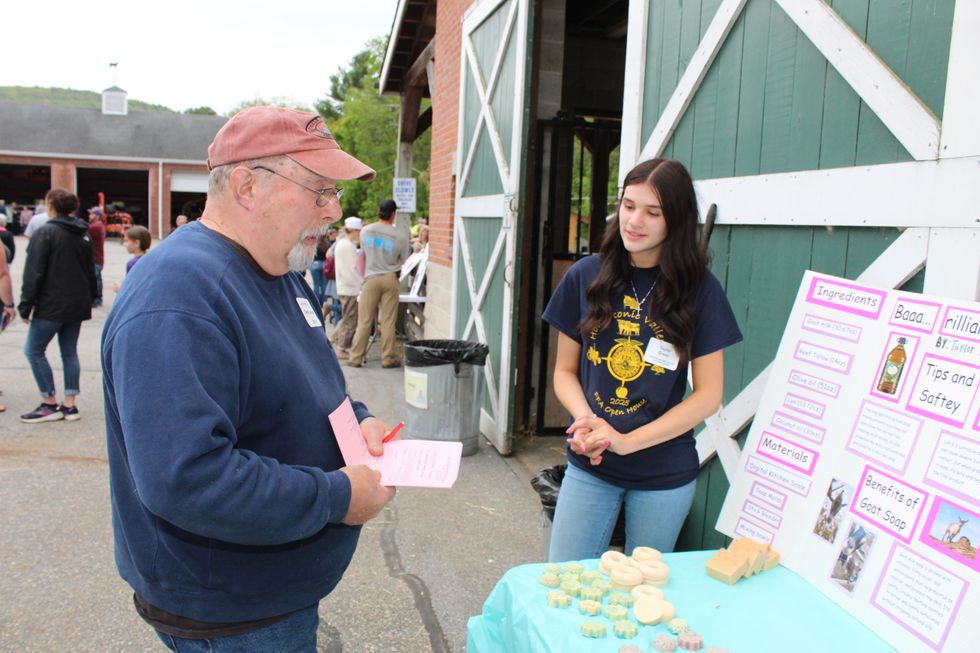
A month into the experiment, the sister has reported no hives or other negative effects, and says the soap makes her skin softer.
Khyra McClennon, a senior from Amenia, New York, was introduced to beignets, a delicate pastry, during a trip to New Orleans.
“I ate them for breakfast, lunch and dinner.”
She had a regular version and a gluten and sugar free version on hand, plus a history of the delicacy to ponder between chews.
Chris Kinsella, a judge, tried the regular version and pronounced it delicious.
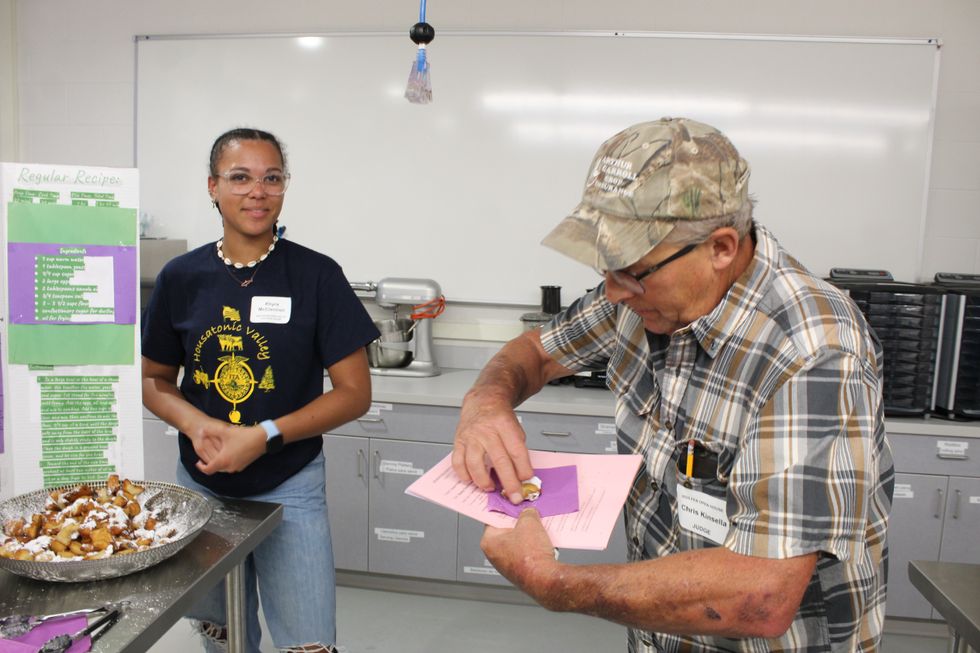
Travis Barber, a 9th grader from Cornwall, was stationed somewhat out of the main drag of activity. That’s because there were some trees nearby, and his topic was how to prune trees.
Turns out this is more complicated than the standard Harry Homeowner might think.
Barber said cutting dead branches is obvious. Less so are branches that cross over other branches. These should go because they tend to rub together and open up the bark, which then allows diseases and insects to get in. The standard tools are loppers, pruners, hand saws and pole saws.
The phrase “semen gun” was prominent on Hayden Bachman’s display. The sophomore from Falls Village said she and several classmates, plus HVRHS teacher Rene Boardman, recently gained certification in artificially inseminating cows.
With a reduced scale model of a cow, she demonstrated how the process works. It’s very tricky and it seemed to a casual observer that there were a lot of things that could go wrong.
Bachman said cattle semen is readily available from commercial sources.
She said the process gives the dairy farmer control over genetics.
It’s also safer than relying on the traditional method, which involves bulls that are notoriously unpredictable and highly irritable animals.
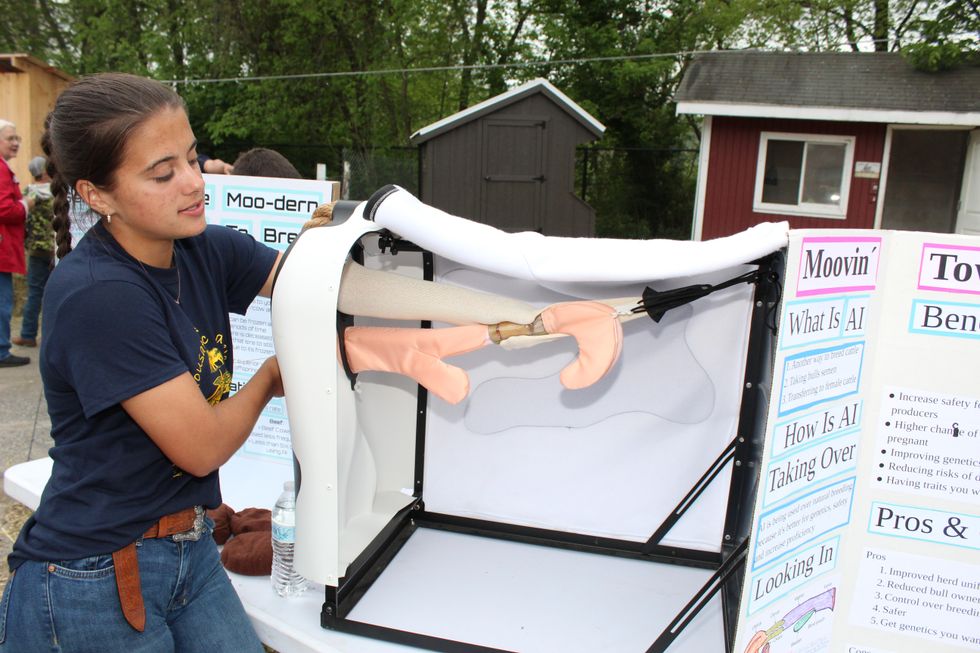
The Salisbury Winter Sports Association (SWSA) will host its annual Junior Jump Camp, a two-day introduction to ski jumping, on Saturday and Sunday, Dec. 27 and 28, from 9 a.m. to 2 p.m. at Satre Hill in Salisbury.
The camp is open to children ages 7 and up and focuses on teaching the basics of ski jumping, with an emphasis on safety, balance and control, using SWSA’s smallest hill. No prior experience is required.
The cost is $50 per child and includes instruction and lunch on both days. For more information or to register, visit www.skireg.com/swsa-camp or email info@jumpfest.org
Jesse Bunce, first selectman of North Canaan.
LITCHFIELD — The Northwest Hills Council of Governments welcomed six newly elected municipal leaders Thursday, Dec. 11, at its first meeting following the 2025 municipal elections.
The council — a regional planning body representing 21 towns in northwest Connecticut — coordinates transportation, emergency planning, housing, economic development and other shared municipal services.
Barkhamsted First Selectman Meaghan Cook, Goshen First Selectman Seth Breakell, Kent First Selectman Eric Epstein, Norfolk First Selectman Henry Tirrell, North Canaan First Selectman Jesse Bunce and Torrington Mayor Molly Spino were each elected to their post in November.
They filled the seats of their predecessors on the COG, who were each given a toast of appreciation: Nick Lukiwsky (Barkhamsted), Todd Carusillo (Goshen), Marty Lindenmeyer (Kent), Matt Riiska (Norfolk), Brian Ohler (North Canaan) and Elinor Carbone (Torrington).
COG Executive Director Rob Phillips said the outgoing members were given a going away mug that read “You’re living the dream still.” Members voted to appoint Warren First Selectman Greg LaCava to fill a vacancy on the Council’s Executive Committee. COG members voted by paper ballot, and LaCava defeated Burlington First Selectman Doug Thompson for the vacant seat.
Ryan Segalla takes a fadeaway shot over a defender.
FALLS VILLAGE — Housatonic Valley Regional High School’s boys basketball team defeated Pine Plains High School 60-22 in a scrimmage Tuesday, Dec. 9. The non-league preseason game gave both sides an opportunity to run the court ahead of the 2025-26 varsity season.
HVRHS’s senior-heavy roster played with power and poise. The boys pulled ahead early and kept their foot on the gas through to the end.
By halftime the score was 33-8. Junior varsity players subbed in for the second half, but not before the starters got some in-game dunk practice. By the end Housatonic totaled 60 points to Pine Plains’ 22.

Nick Crodelle led the Mountaineers offensively with 13 points. Anthony Labbadia and Wyatt Bayer scored nine points each. Anthony Foley scored eight points. Owen Riemer and Ryan Segalla each scored seven points. Peyton Bushnell hit a three-pointer. Jaxon Visockis and Henry Berry each scored two points.
HVRHS begins Berkshire League competition on the road at Nonnewaug High School Tuesday, Dec. 16, with a 6 p.m. tip off.

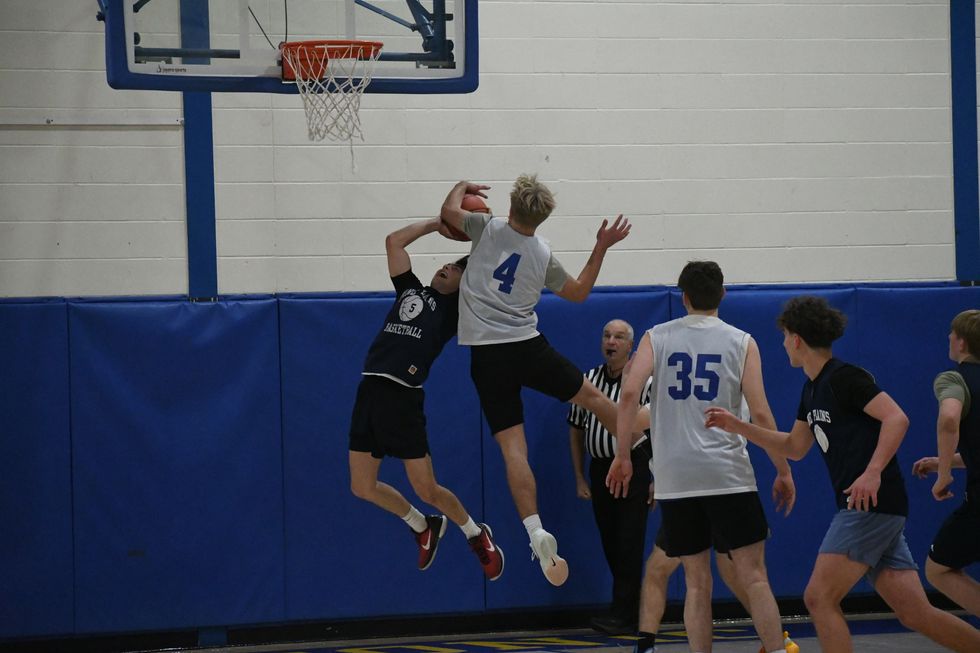
Katie Moore delivers toys to the Stuff a Truck campaign held by the Kent Volunteer Fire Department last weekend. Donated toys are collected so that parents, who need some assistance, may provide their children with gifts this Christmas. Accepting the donation are elves Fran Goodsell and Karen Iannucci
KENT — Santa’s elves were toasty warm as they collected toys for the children of Kent.
Keeping with annual tradition, Fran Goodsell and Karen Iannucci manned the Stuff a Truck campaign sponsored by the Kent Volunteer Fire Department on Saturday, Dec. 6, and Sunday, Dec. 7. Sitting in front of a fire pit in the firehouse parking lot between donations from residents, they spoke of the incredible generosity displayed every season. That spirit of giving was clear from the piles of toys heaped on a table.
“This is always so gratifying,” said Goodsell, noting that certain businesses, including High Watch Recovery Center, Wilson’s, and Kent and South Kent schools needed a “shout out” for all they’ve done. She said South Kent School focuses on gifts for older children, which is a group that often is overlooked.
Unwrapped contributions are sought for children 1 to 15 years old who might otherwise find little or nothing from Santa, they said. The bounty will be set up at the Community House on Thursday, allowing parents to come and take what they want. If there are still items left, grandparents are invited to “shop.”
The atmosphere was festive Saturday, as a stuffed dog began barking a Christmas tune whenever someone walked in front of it. A large decked-out bear posted at the parking lot entrance reminded passersby of the event. Visiting children were able to get a close-up look at the fire truck and walk through the firehouse if they wished.
Goodsell and Iannucci were very grateful to those who donated wood for the fire pit. “And so many asked if they could bring us coffee or hot chocolate,” said Iannucci.
Goodsell said many who came talked about having grown children who were recipients of the gifts when their families were struggling. “They are so glad to be able to give back,” she said.